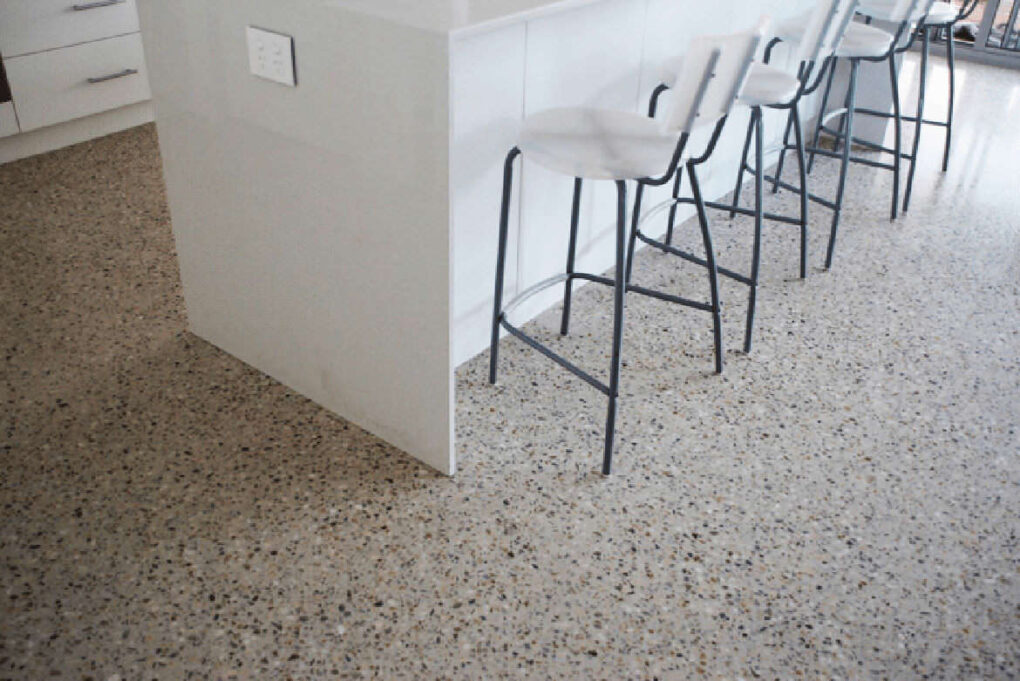What Type of Aggregate is Best for Exposed Concrete? Making the Right Choice for Driveways and Floors
Introduction
Exposed aggregate concrete is a versatile, durable, and visually appealing choice for driveways, patios, and interior floors.
A defining aspect of this type of concrete is the aggregate – the small stones, pebbles, or other materials that are embedded in the concrete.
The choice of aggregate can significantly influence the appearance, texture, and durability of the finished surface.
This article explores the types of aggregates best suited for exposed concrete and why this material is an excellent choice for driveways and floors.

I. Understanding Aggregate Choices
The choice of aggregate plays a pivotal role in determining the aesthetic and functional qualities of exposed aggregate concrete. Here’s a look at some popular options:
Crushed Stone
This is a commonly used aggregate, known for its strength and durability. It comes in a variety of sizes and colors, allowing for plenty of customization.
Gravel
Available in a variety of sizes and colors, gravel provides a rounded shape that can create a different texture and appearance in the finished concrete.
Glass
Crushed glass can add a unique, sparkling appearance to exposed aggregate concrete. It’s available in a multitude of colors and is often recycled, making it an environmentally friendly choice.
Shells
In coastal areas, crushed shells are often used as aggregate for a natural, beachy look.
II. Factors to Consider in Choosing Aggregate
When choosing the best type of aggregate for exposed concrete, several factors should be considered:
Durability
The aggregate should be hard and durable, capable of withstanding the elements and the wear and tear of traffic.
Aesthetics
The color, shape, and size of the aggregate will significantly impact the look of the finished concrete. Choose an aggregate that complements the surrounding architecture and landscape.
Texture
The aggregate will affect the surface texture of the concrete. For example, larger, rounded aggregates like pebbles will create a smoother surface, while crushed stone or glass can provide more traction.

III. Why Exposed Aggregate is a Good Choice for Concrete Driveways
Exposed aggregate is particularly well-suited to driveway applications for several reasons:
Durability
The high strength of exposed aggregate concrete makes it able to withstand the weight of vehicles and resist wear and tear.
Non-Slip Surface
The textured surface of exposed aggregate concrete provides excellent traction, reducing the risk of slips and falls.
Low Maintenance
Apart from occasional resealing, exposed aggregate concrete requires little maintenance and is resistant to staining and weather damage.
Aesthetics
Exposed aggregate concrete offers a range of design possibilities. With a variety of aggregates to choose from, you can create a driveway that complements your home’s exterior beautifully.
IV. The Benefits of Exposed Aggregate for Interior Floors
Exposed aggregate is also a popular choice for interior flooring, offering the following benefits:
Unique Design
The use of different aggregates can create a distinct, customized look that can’t be achieved with traditional flooring materials.
Durability
Exposed aggregate floors are extremely durable and can withstand heavy foot traffic, making them ideal for commercial spaces and busy households.
Easy Maintenance
These floors are easy to clean and maintain, making them a practical choice for high-traffic areas.
Conclusion
Choosing the right aggregate for exposed concrete depends on several factors, including durability, aesthetics, and texture.
Both for driveways and interior floors, exposed aggregate concrete provides a robust, low-maintenance, and visually appealing solution.
With a wide range of aggregate options to choose from, homeowners can create unique, customized surfaces that are built to last.
